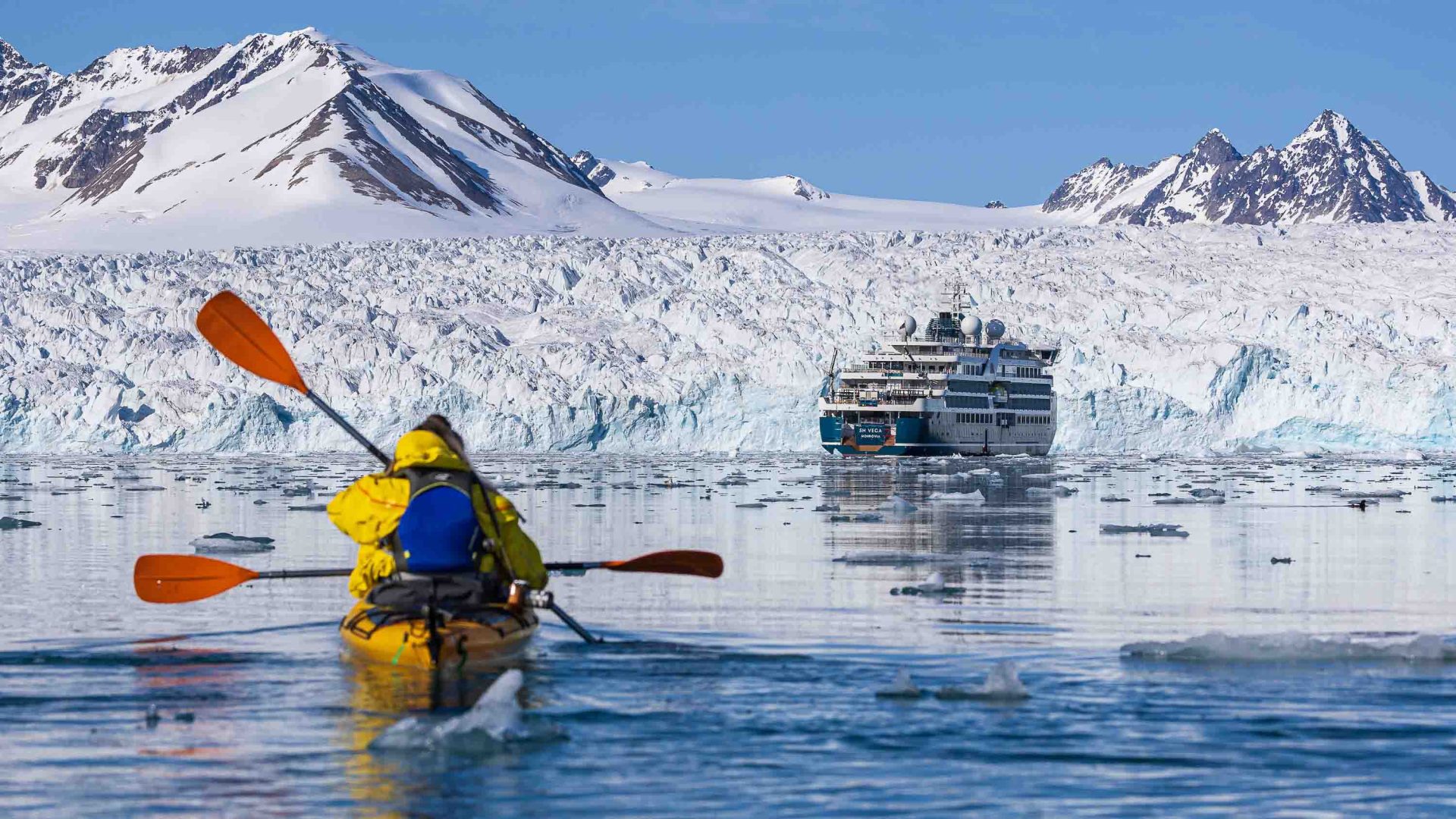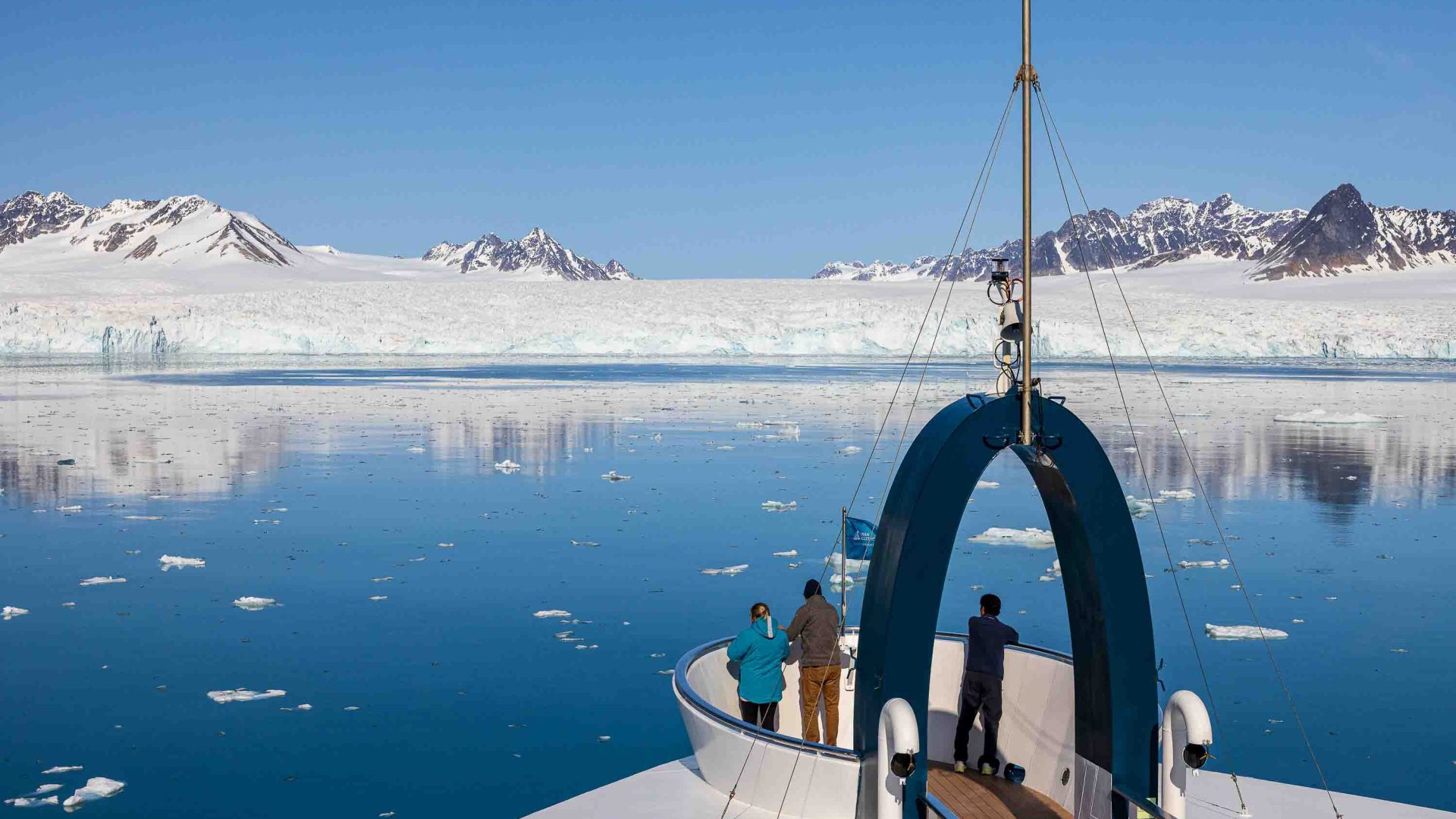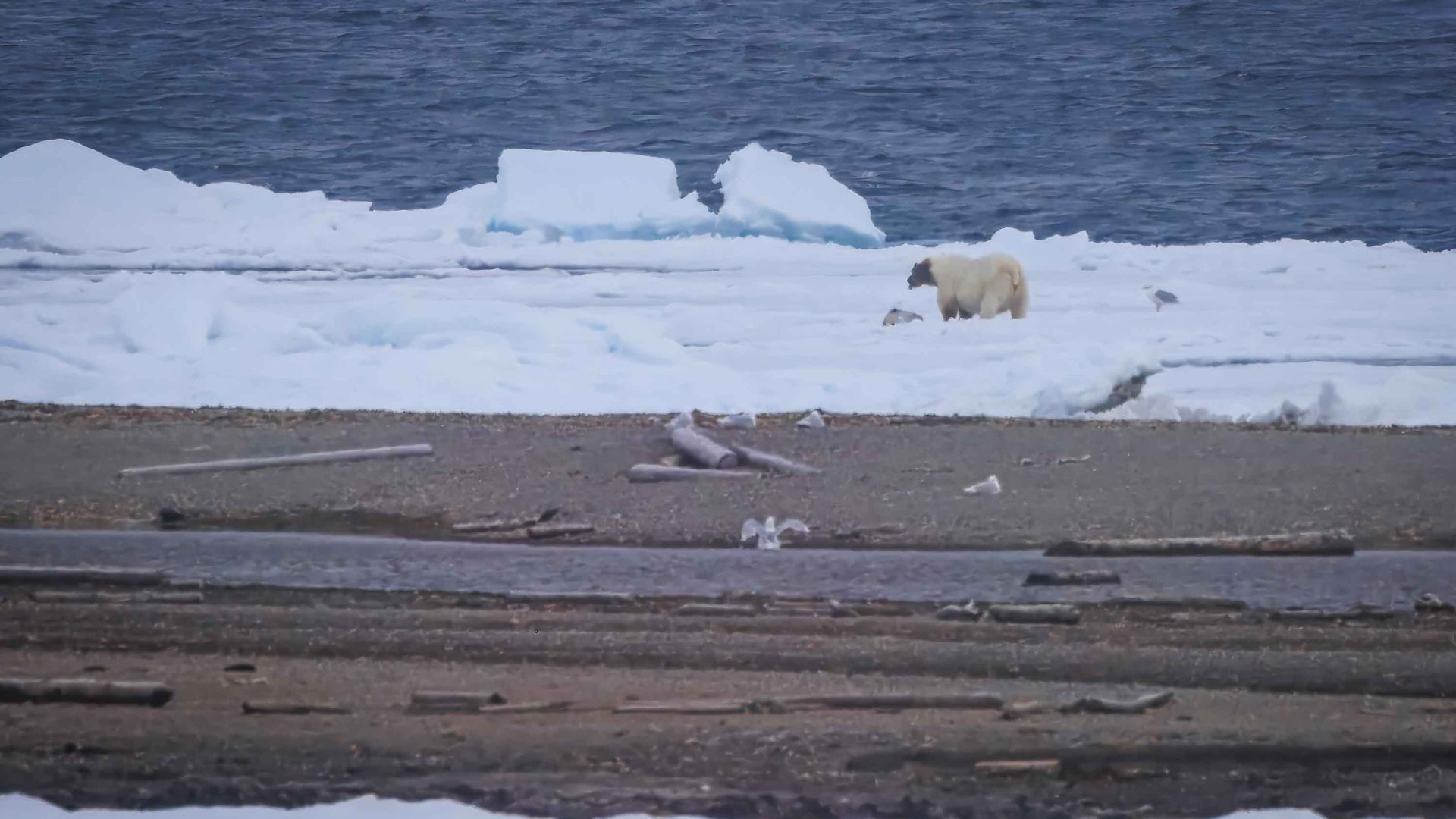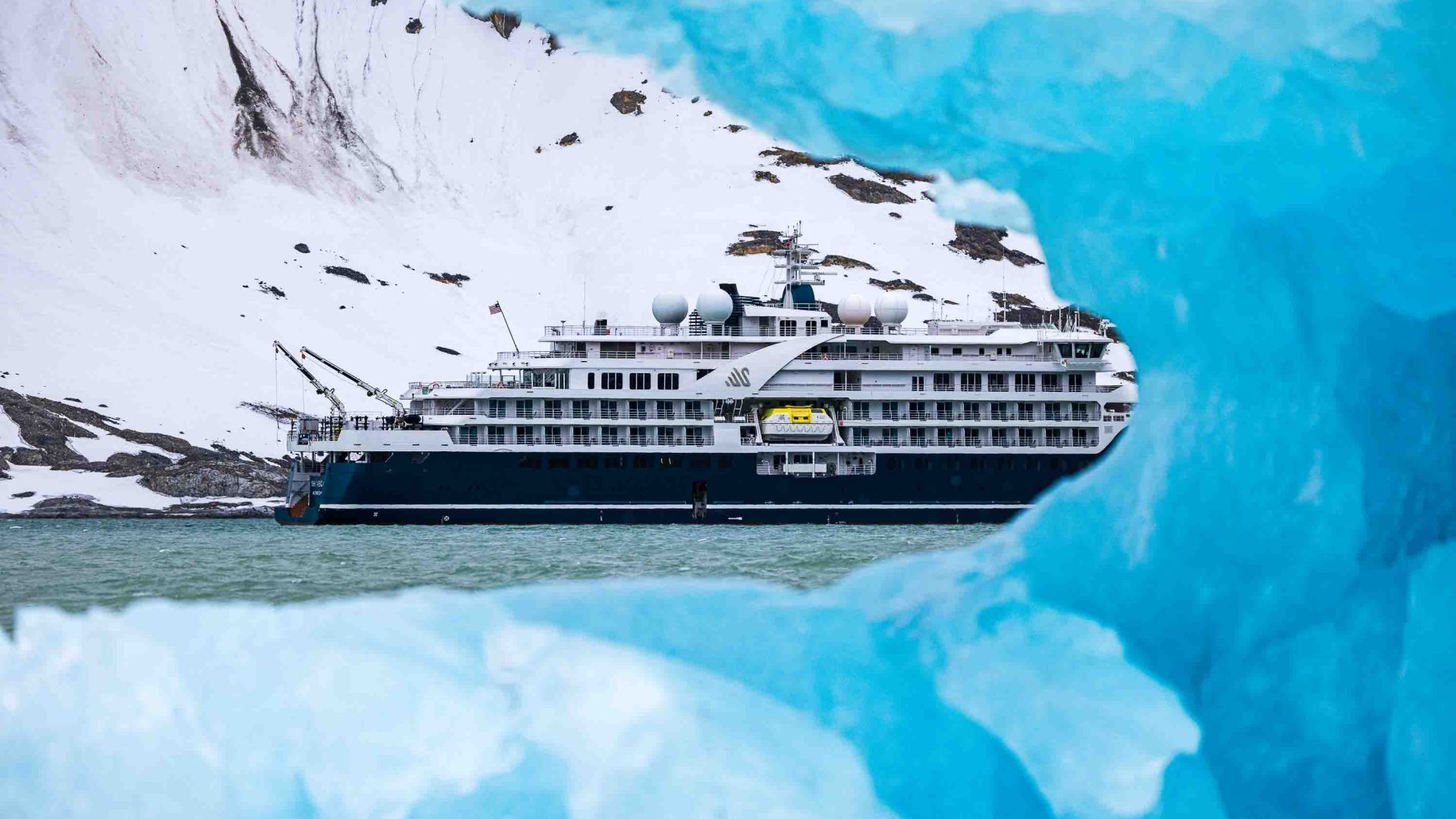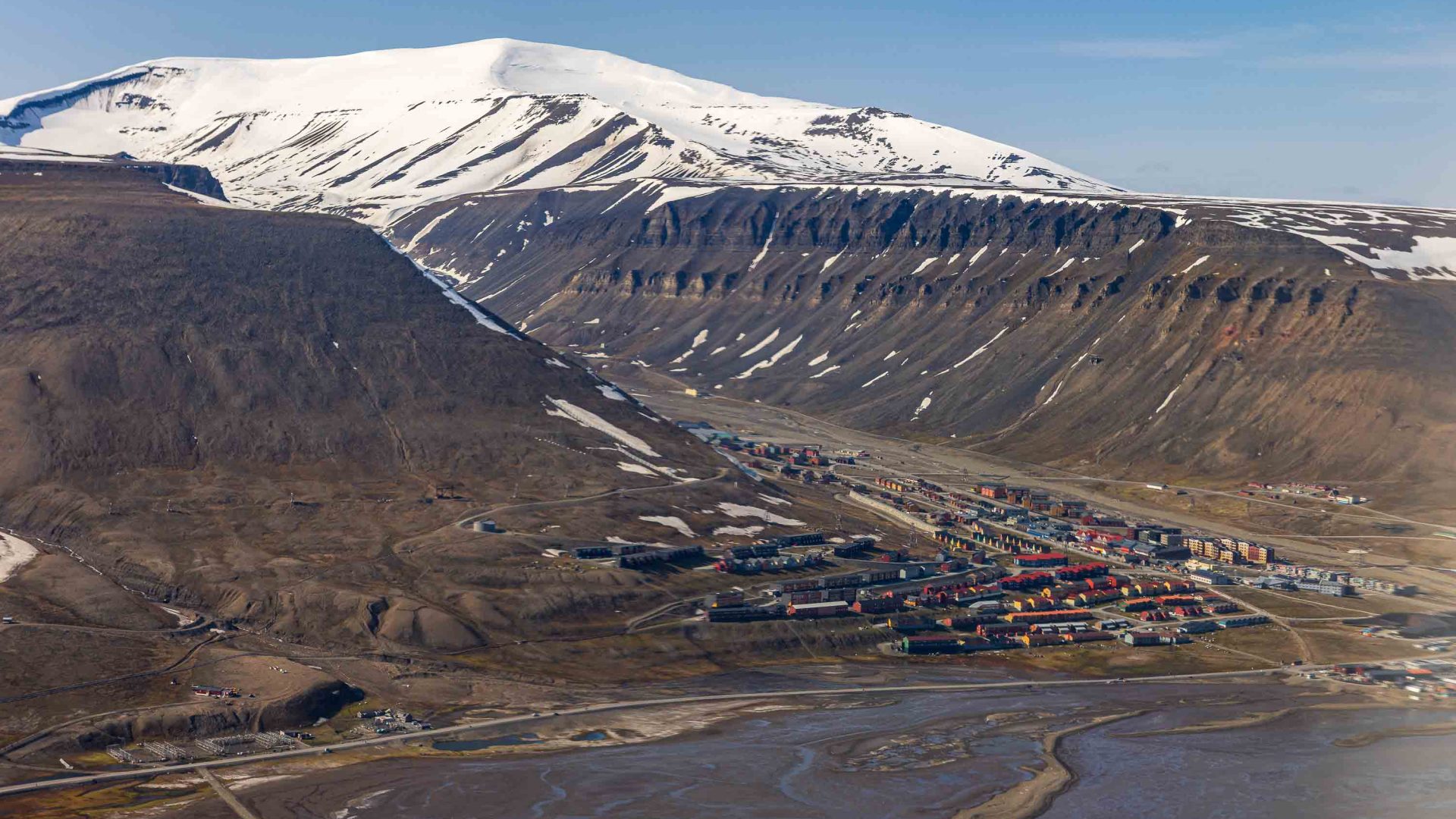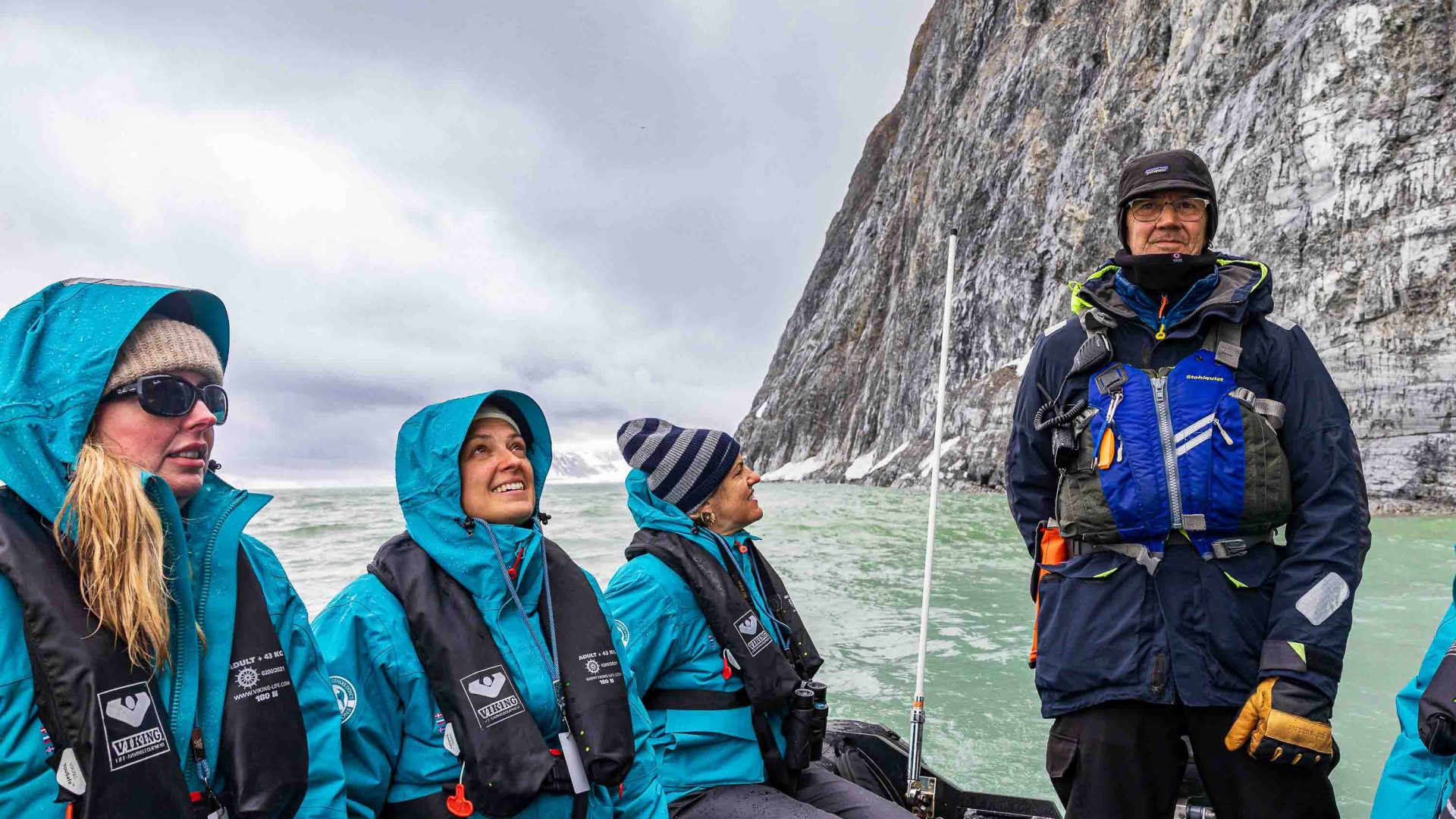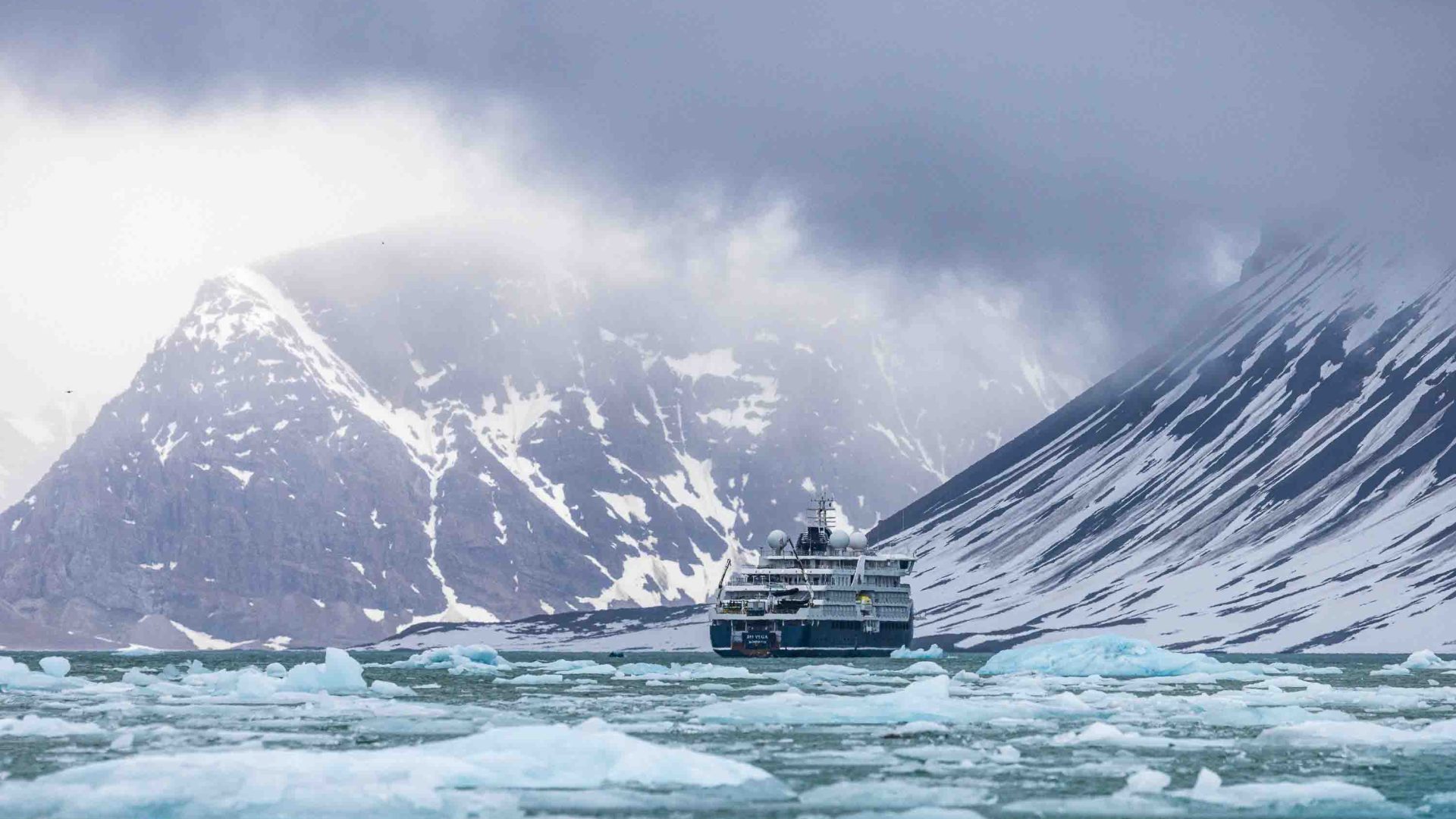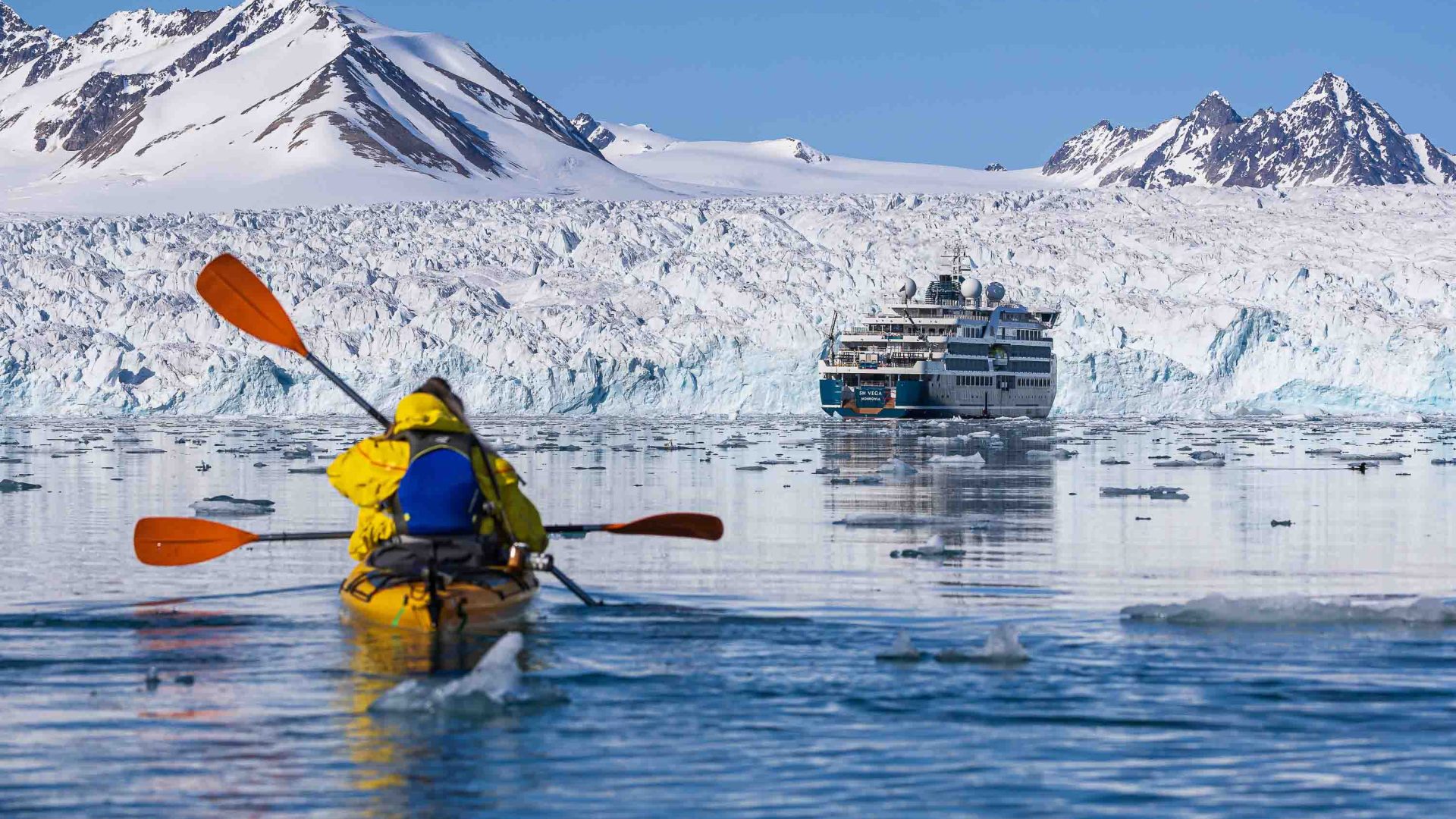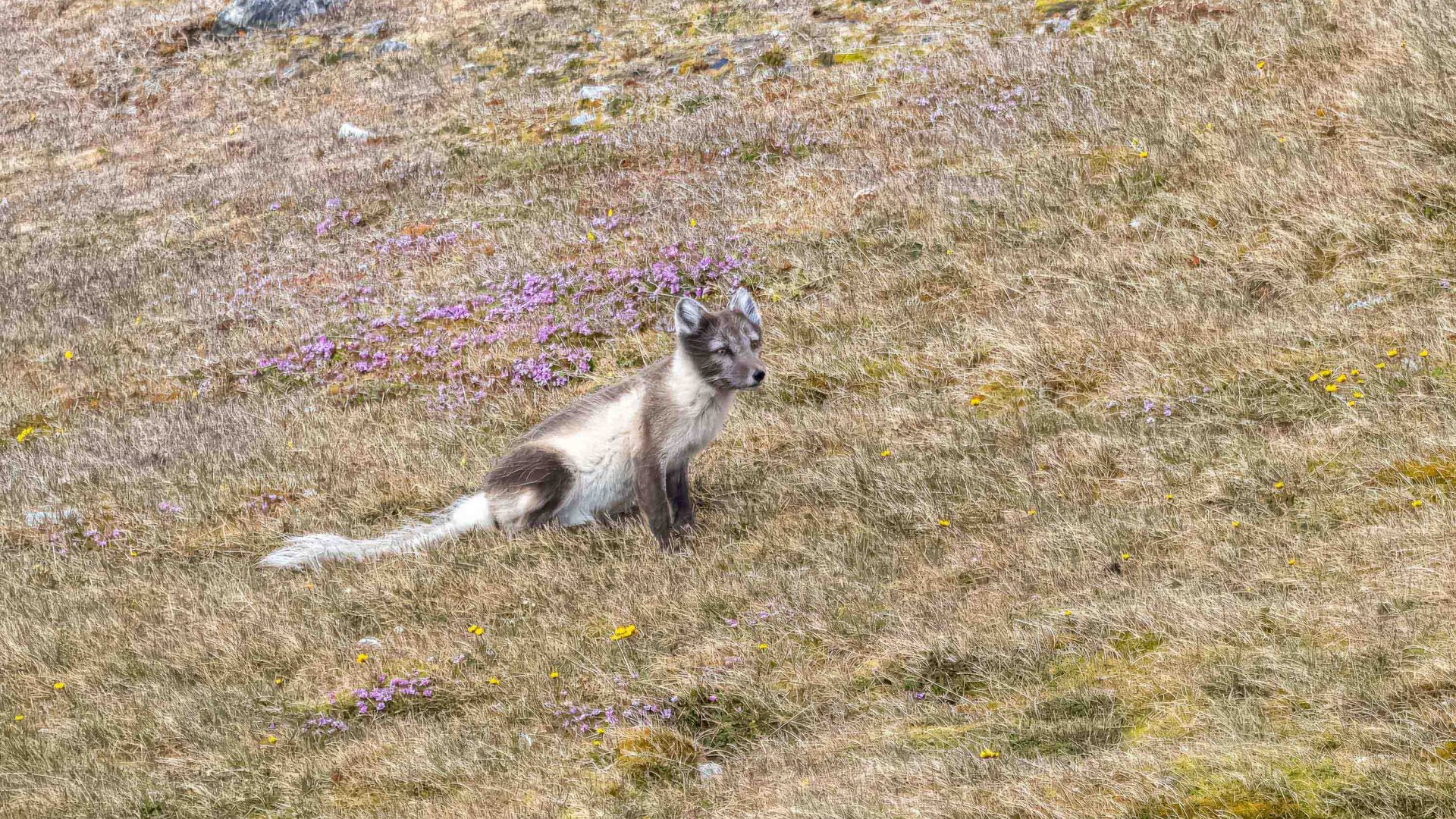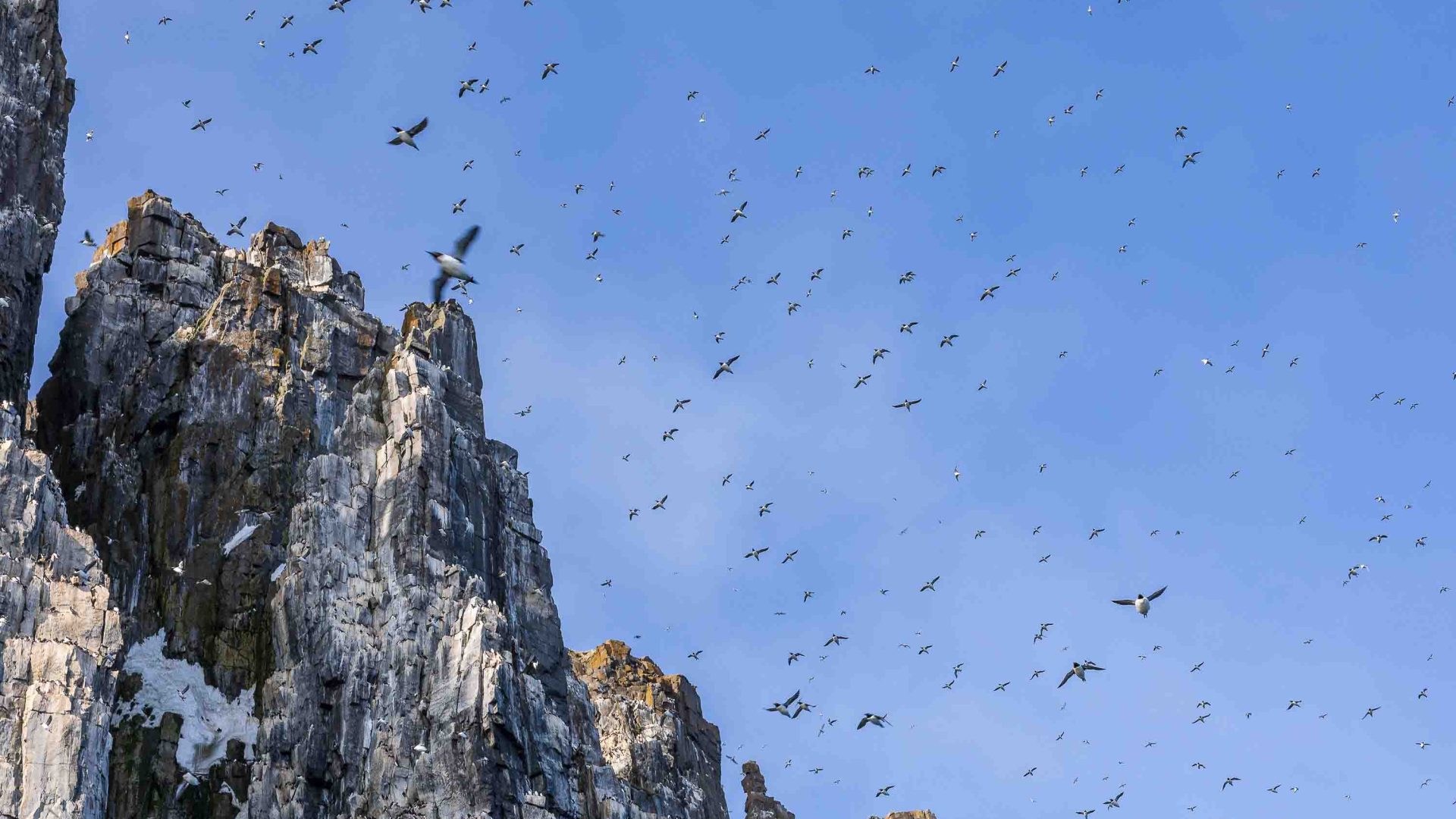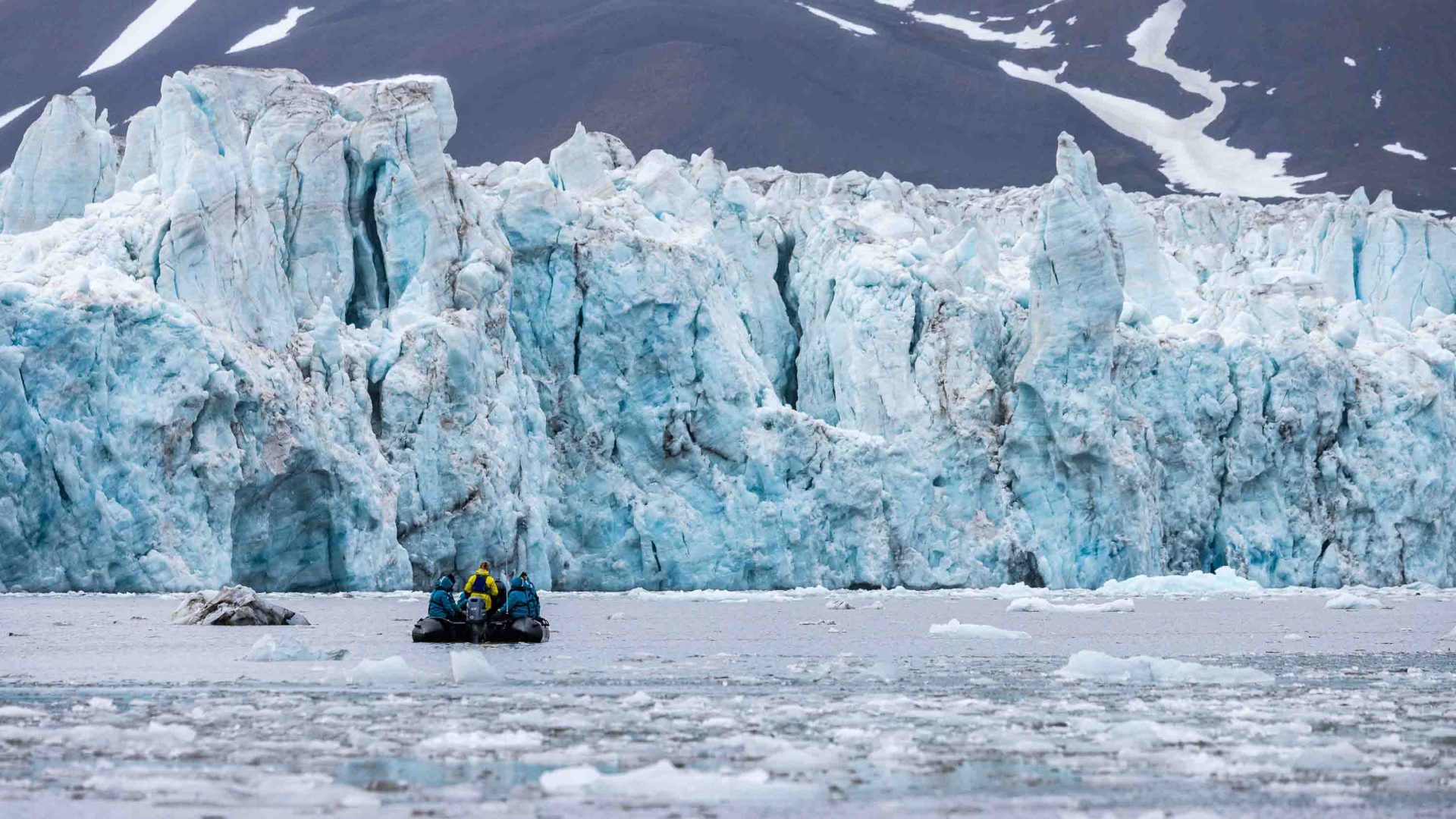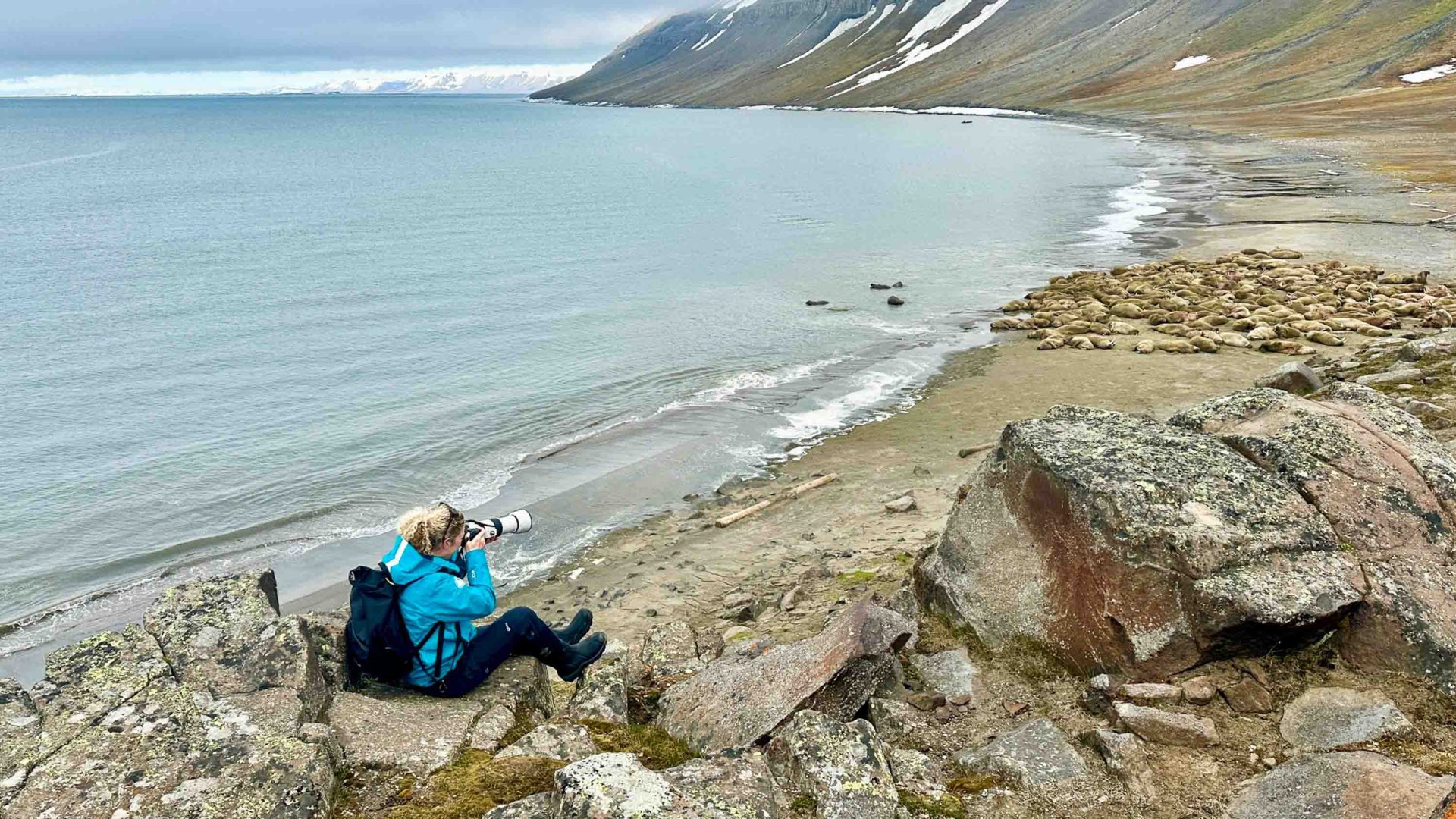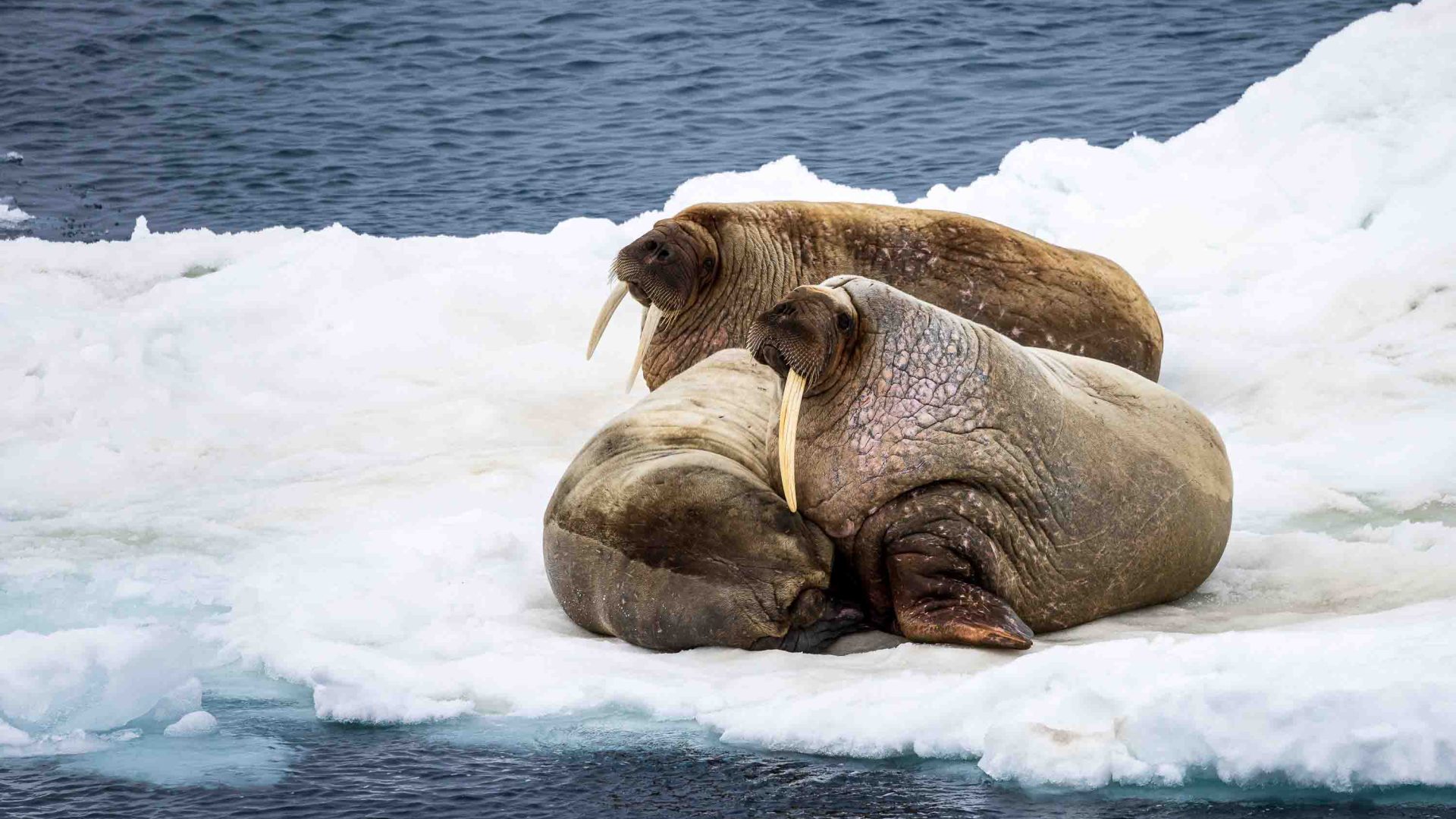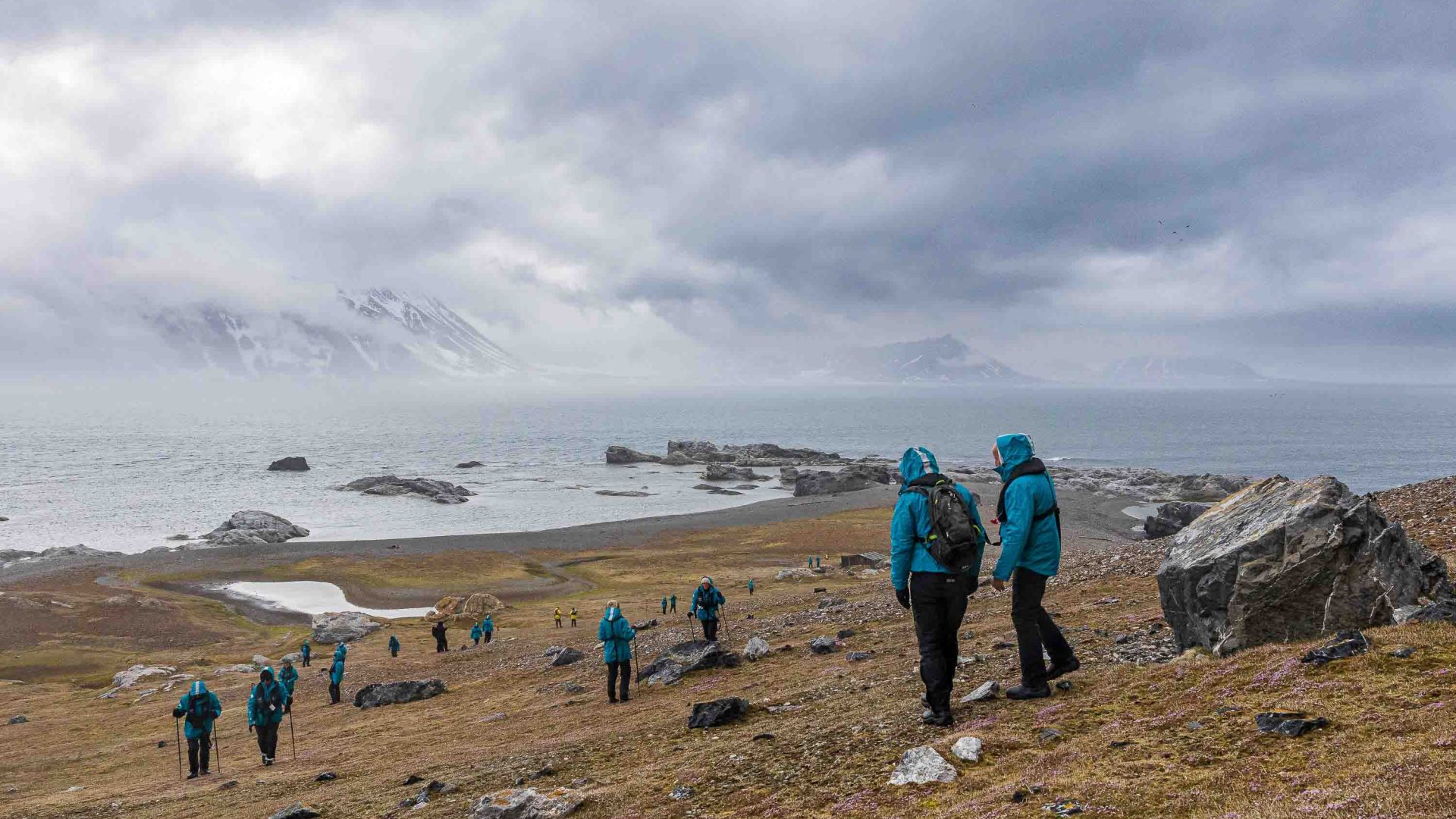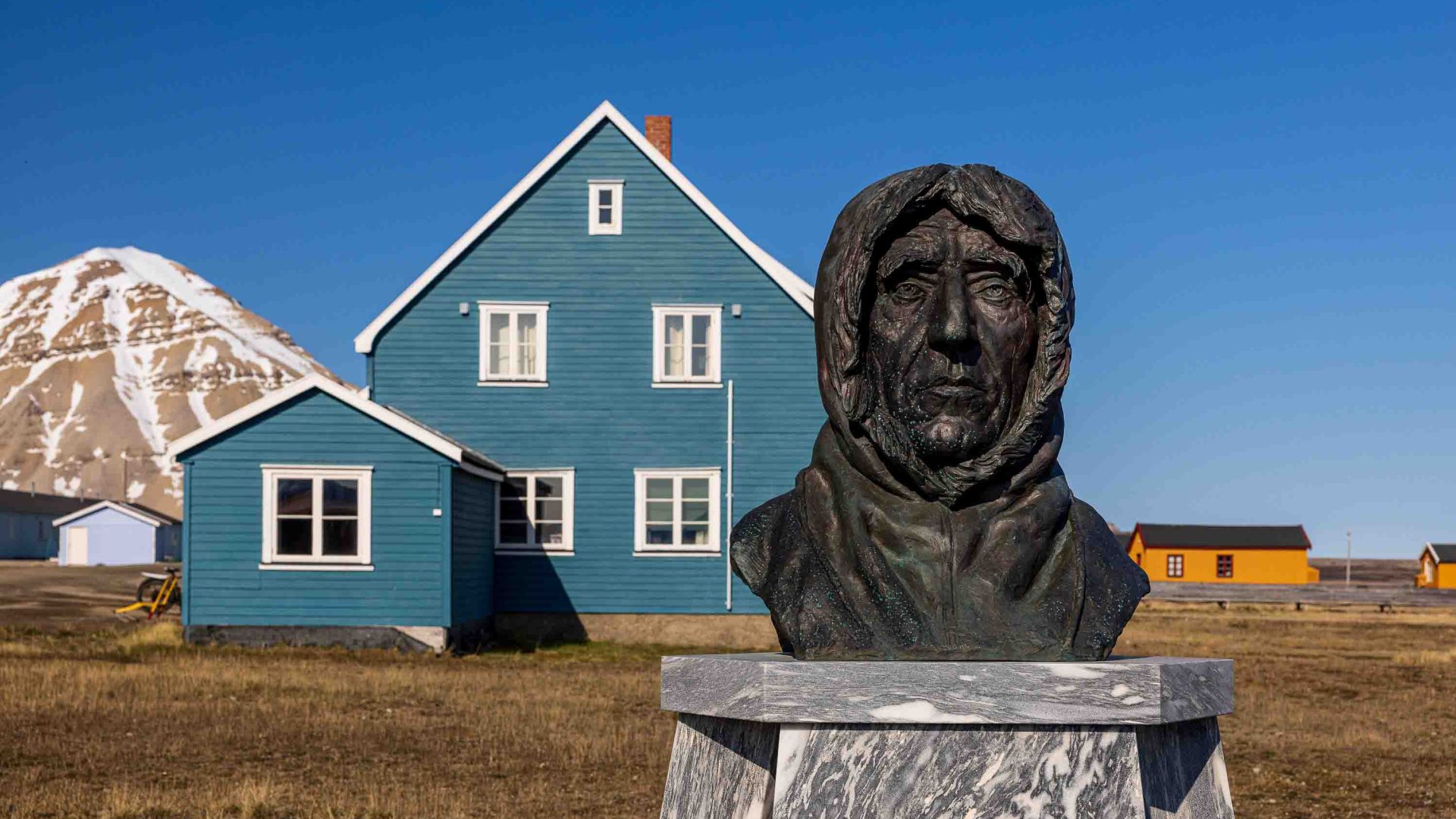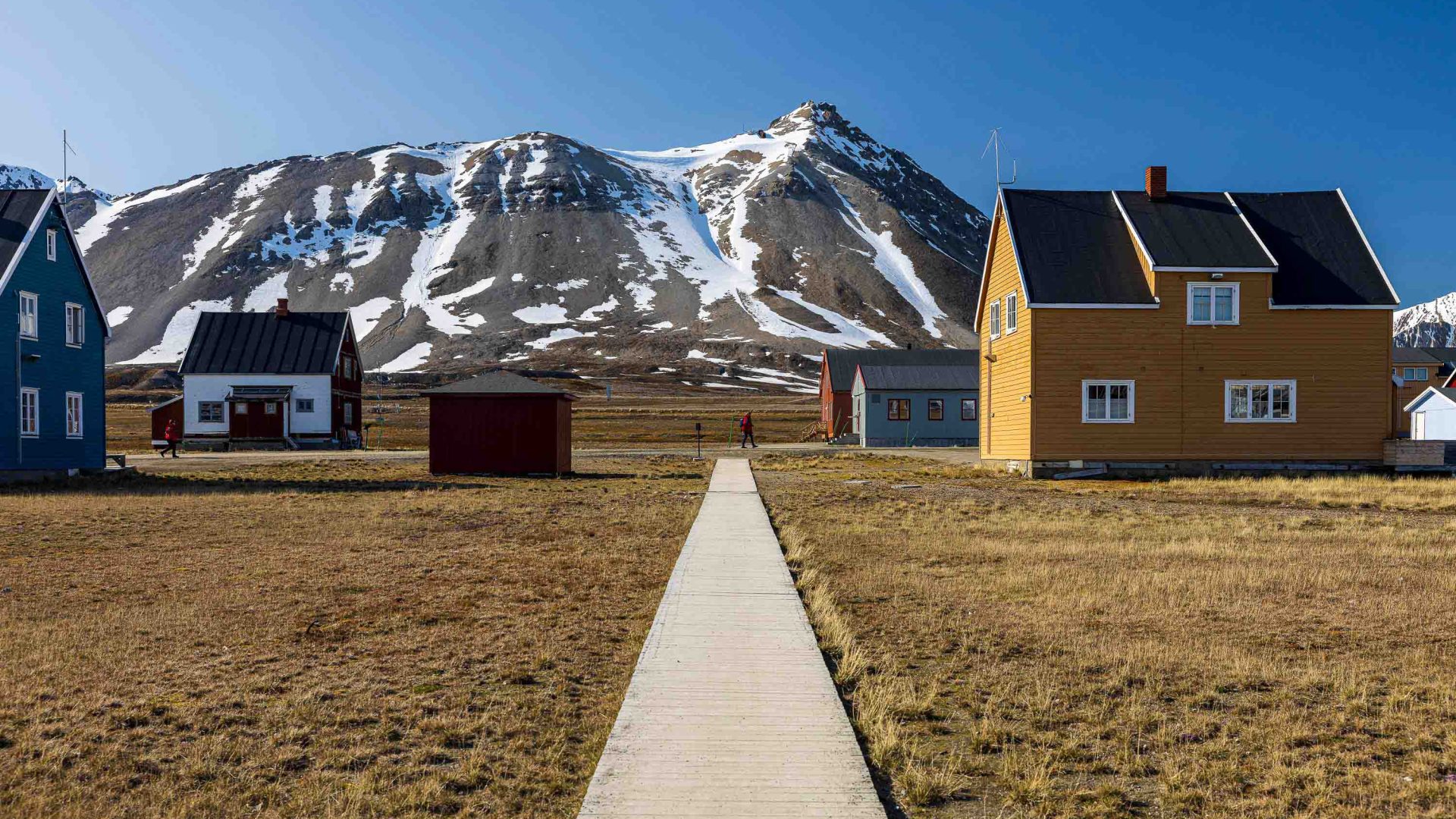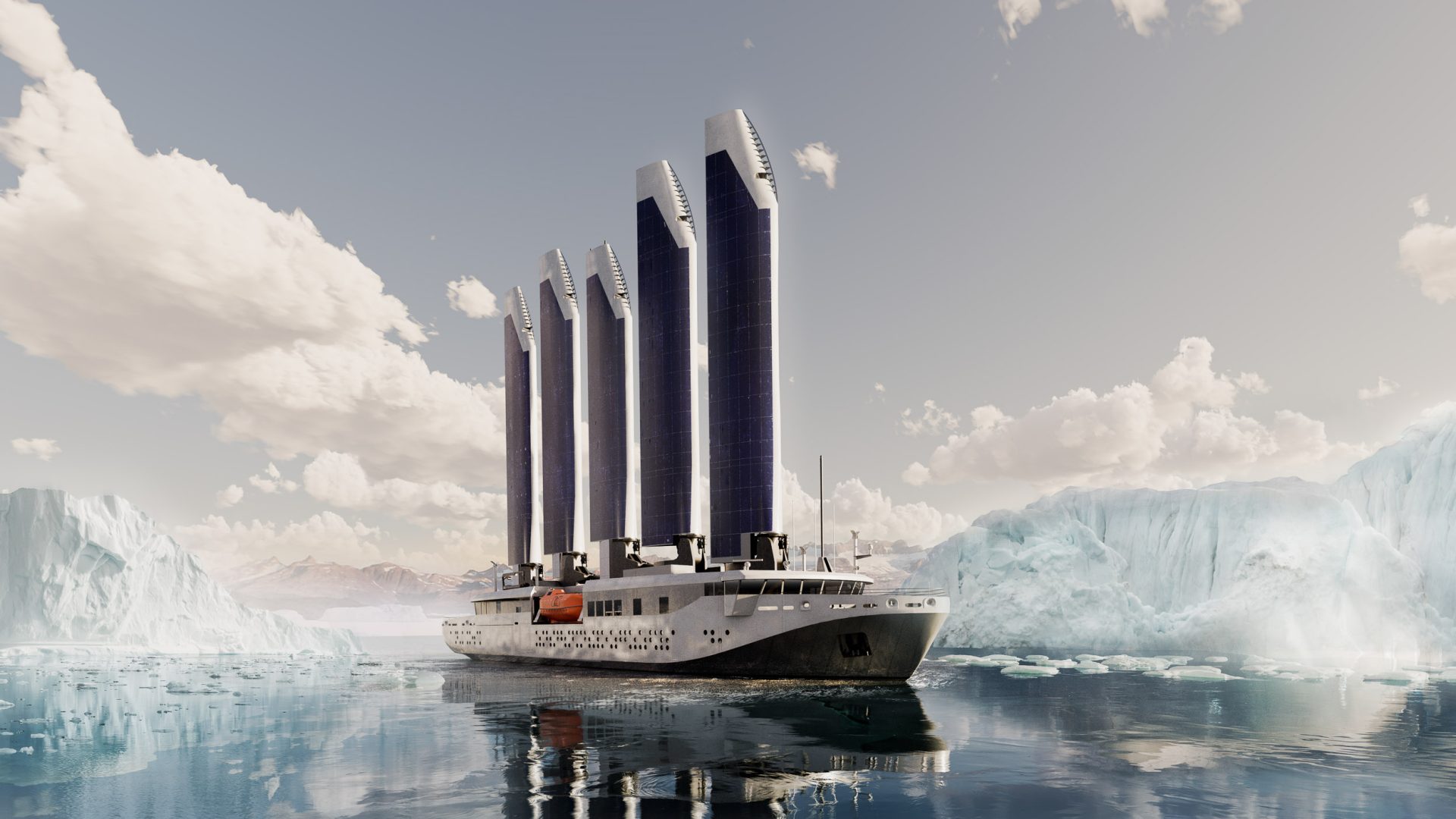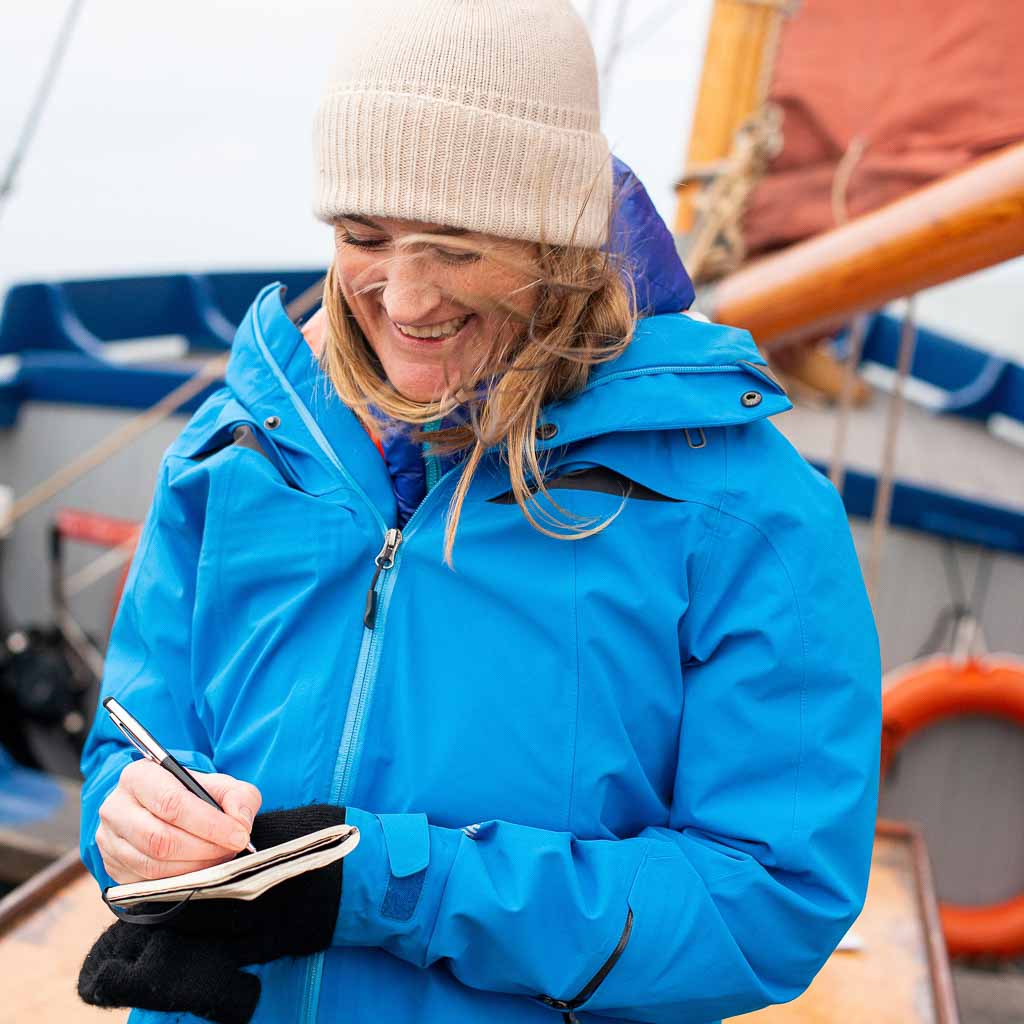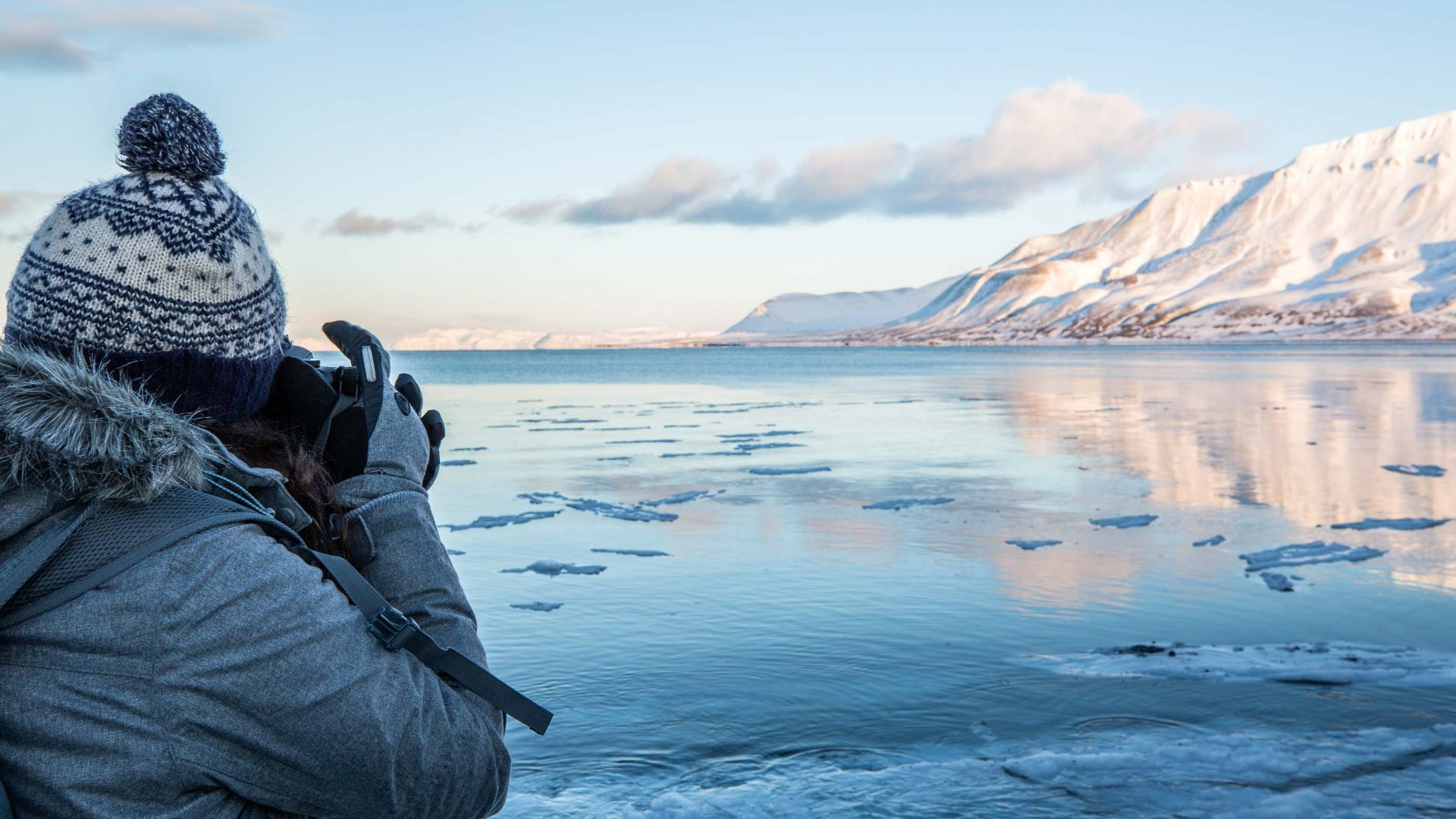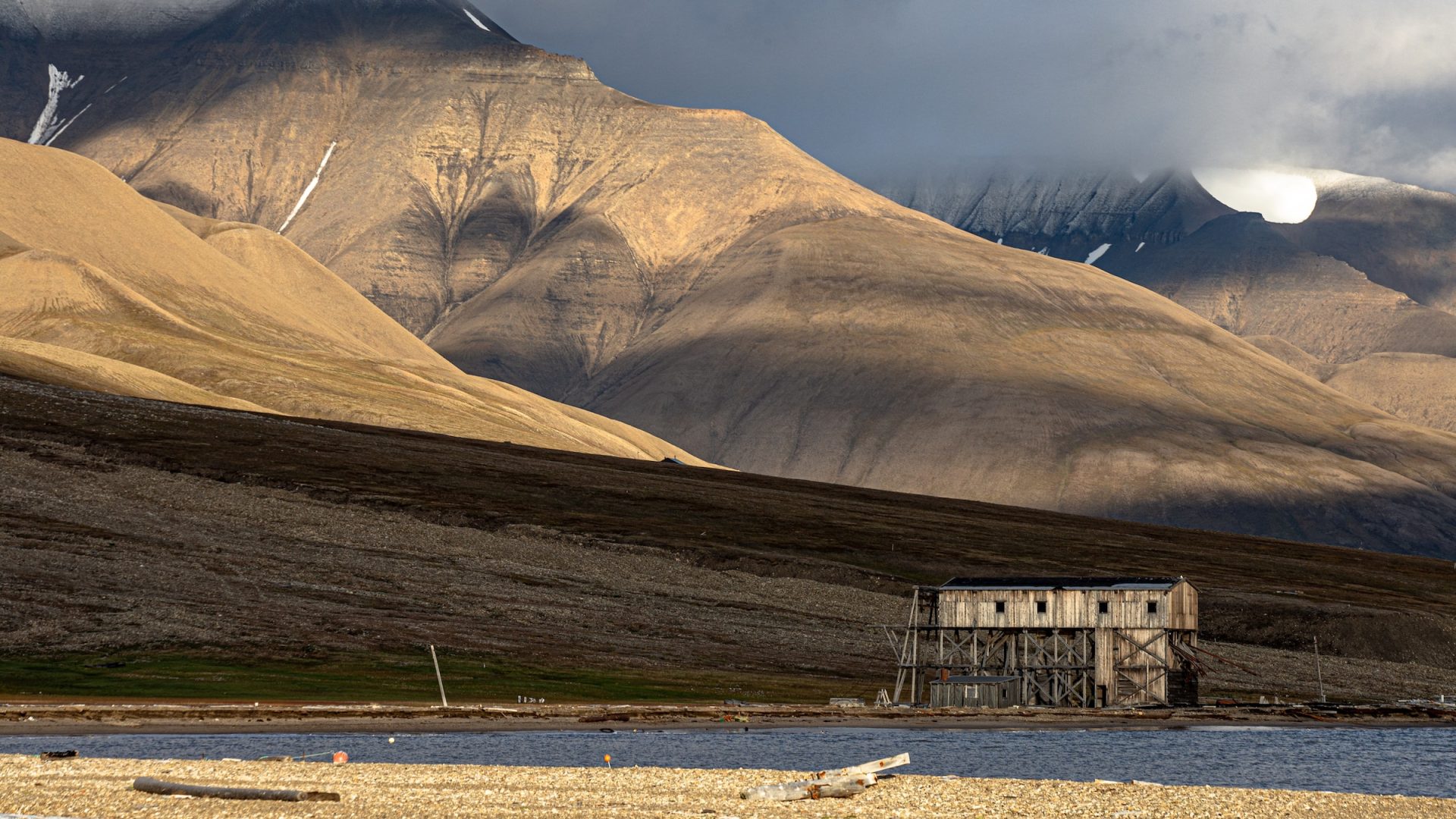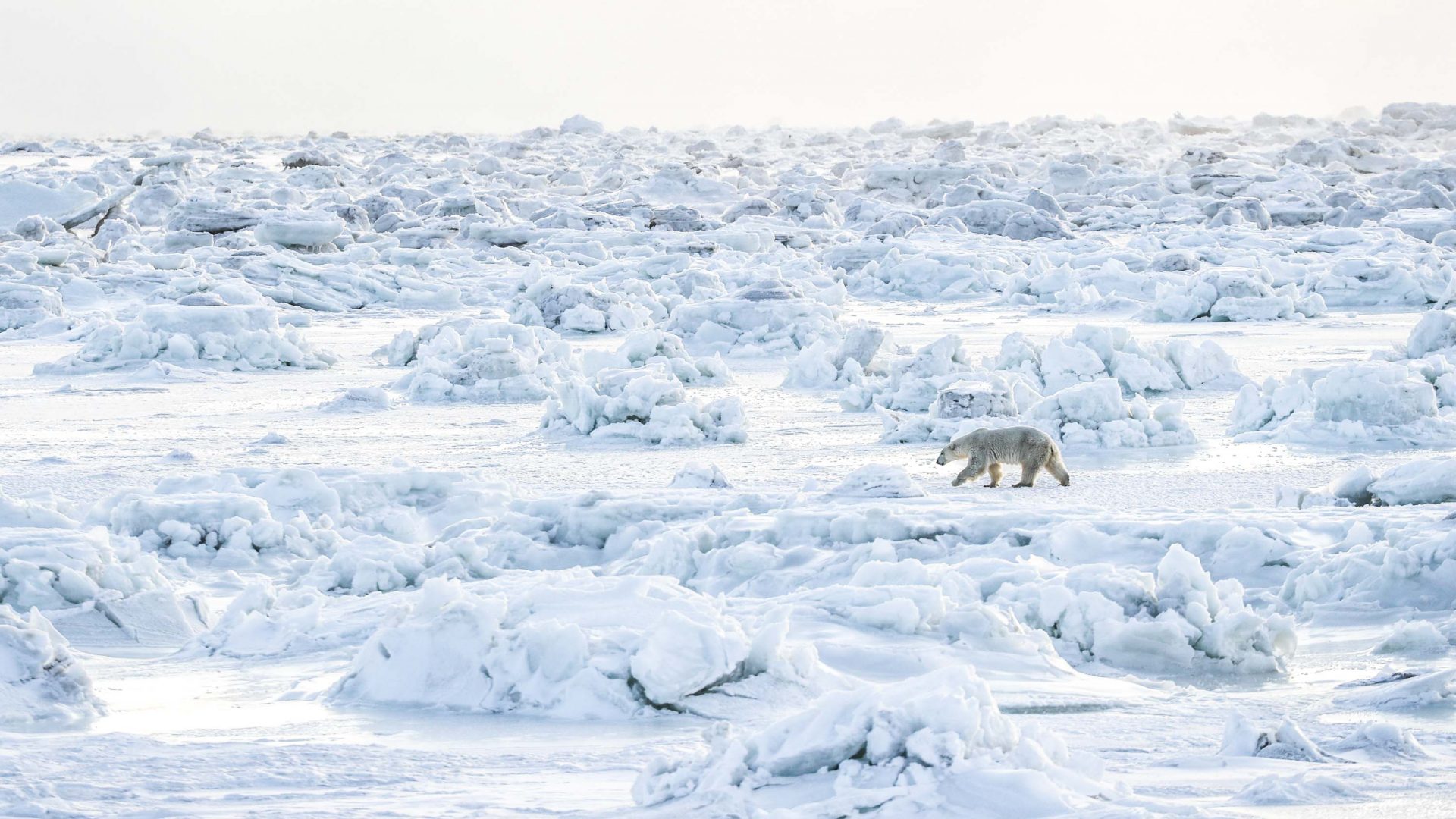We stop at another former coal mining settlement, Ny-Ålesund, now a polar research base staffed by scientists from 11 nations. Reindeer graze in front of red- and yellow-painted huts, and an Arctic tern nests close to a statue of Norwegian explorer Roald Amundsen, who launched his 1926 airship expedition over the North Pole from here. In the on-site museum, miners’ lamps and sepia photos of coal-blackened men provide a glimpse not only into Svalbard’s past, but also into an alternative future.
“The Arctic was used for mining and whaling,” explains Zane Jerome, SH Vega’s assistant expedition leader. “So I would rather see responsible tourism, where people respect the environment and help protect it, than the return of industry.”
With its history and picturesque landscape, Ny-Ålesund is also a reminder that the Arctic cruise experience is about so much more than seeing animals. “We’ve got too used to getting up close and personal with everything. Some people will never be satisfied unless they can pet the polar bear,” says Jerome, laughing. “But just being on the ship, in this incredible landscape, learning about the history and yes, seeing some wildlife—it’s all part of the thrill.”
While some may find the new rules clumsy or frustrating, and they won’t stop the ice from melting or the seas from rising, they might, at least, buy some time. By accepting that we need to take a step back, and by choosing smaller boats and local operators, tourism can remain a force for good in Svalbard. And if a few disappointing photos is the sacrifice it takes to preserve one of the planet’s last wild frontiers, it seems a pretty fair price to pay.
